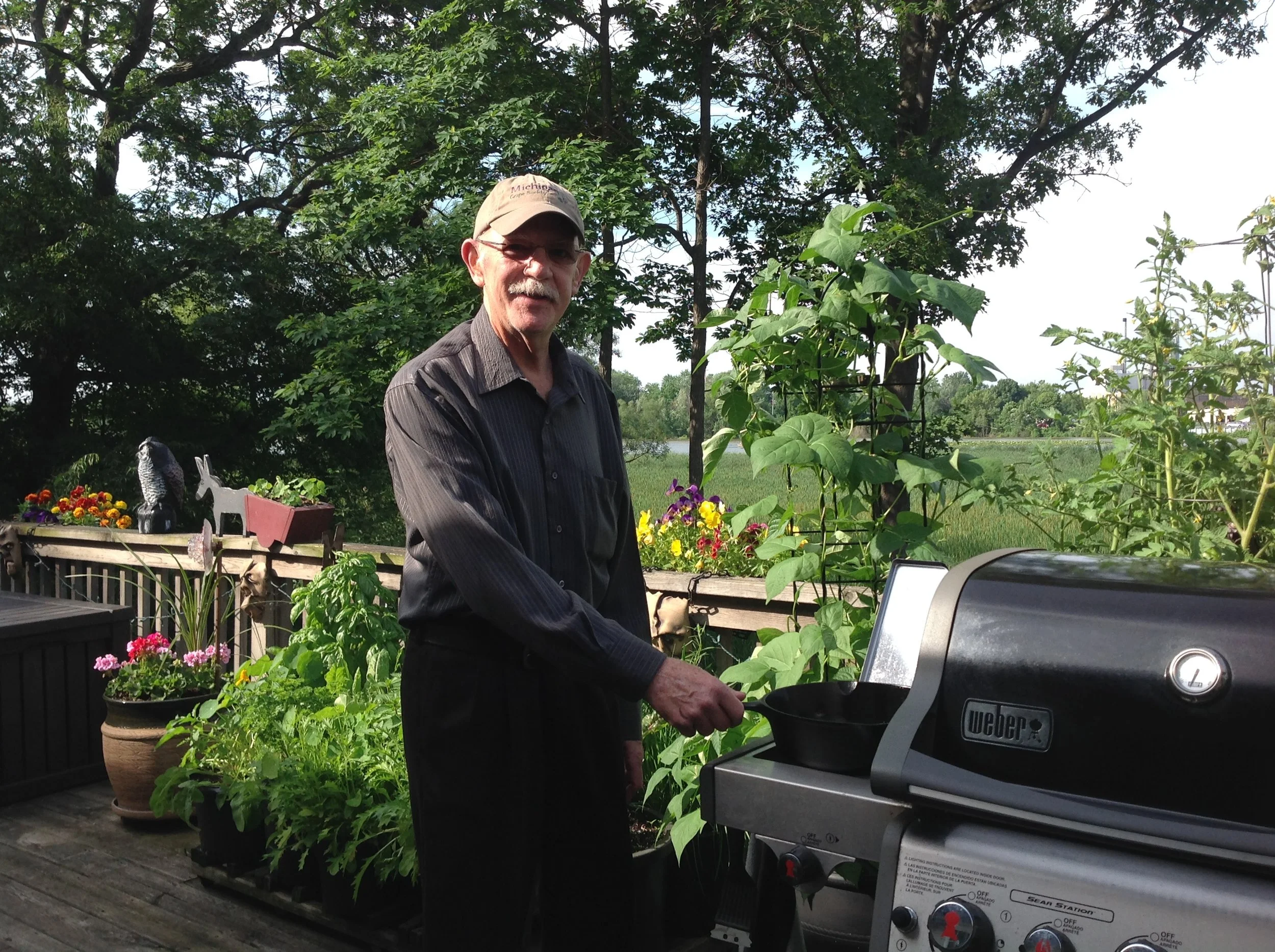Swiss Chard; the miracle food

Swiss Chard; the miracle food
Because of our move to Ann Arbor this spring, our spring planting schedule got delayed by several weeks. In Holland being on the water and elevated several feet above the ground our “pot garden” could usually be successfully planted late April or early May. This year, we had to wait until we were settled into Ann Arbor to plant which brought us to Memorial Day weekend. What I’ve found over the years of growing pot gardens is that when you buy plants that have been on the nursery shelf, starved and crowded, they make up for lost time immediately when you plant them. I’m not sure you lose any potential harvest advantage by planting late. I sometimes think that the cool April early May weather might even stunt some vegetable plants.
Anyway, one of our staples over the years is Swiss Chard. Yes it kills me to pay $4 for a small nursery seedling clump of chard when you can pay that for a big bunch at the supermarket ready to eat, but, that little clump gives tremendous yields. In the picture above, the chard has been harvested twice already and will be harvested a third time in the next few days. Just about once every other week, we harvest it and generally eat it for two meals. It’s pretty amazing how one cubic foot of flower pot soil can feed two people something like 15-20 meals!
We have been growing our garden in pots since moving to Holland in 2007 and here are a few things we’ve learned.
It is not necessary to plant early. The longer you wait, the warmer it gets. But, you do need to be mindful of dry weather going into June.
The bigger the pot the better. Though I prefer plastic pots many people prefer ceramic terra cotta pots but in Michigan they often freeze and crack over the winter especially the big ones. I think the black plastic in the sunlight also warms the plants early in the season to promote growth and germination.
Regular pots need to be well drained. It is best to literally flood them and let them drain out quickly. That reduces buildup of salinity.
Grow Pots (pictured here) work best for tomatoes. Just about everything else will grow just fine in a normal nursery pot. For some reason, tomatoes are the exception. Grow Pots are a quasi hydroponic system with soil above and lime-treated water below
When harvesting Swiss Chard or any leafy plant, always leave at least one small leaf per root so that the plant can re-invigorate foliage quickly.
Here is my basic Swiss Chard recipe:
One large bunch of Swiss Chard.; stems cut and chopped leaves torn or chopped in large pieces. Half of an onion. A few slices of chopped bacon A large clove of garlic smashed and chopped
Brown the bacon in a large frying pan; do not drain. Add the onions and chopped stems. When soft, add the garlic. When the garlic has cooked though (not browned) add the chard leaves. If everything is very dry, you’ll need to add a splash of water or broth and/or olive oil or butter. Cook until all the leaves are very wilted. Leftovers are great in quiche.
Enjoy!
Brian Cain, the Michigan Vintner





